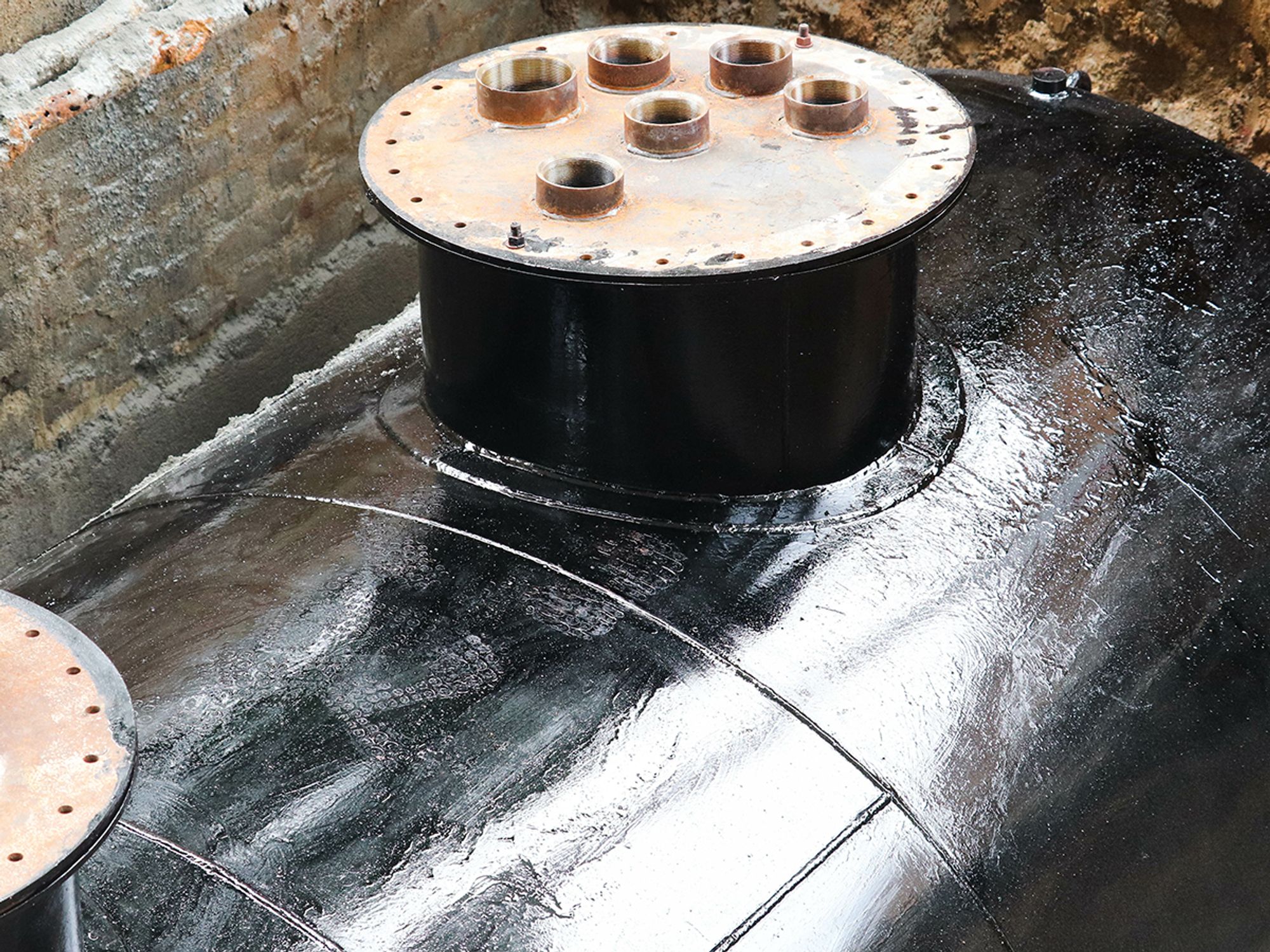Key definitions for USTs

- Certain terms are integral to understanding UST regulations.
Ancillary equipment: Any devices including (but not limited to) those such as piping, fittings, flanges, valves, and pumps used to distribute, meter, or control the flow of regulated substances to and from an underground storage tank (UST).
Cathodic protection: A technique to prevent corrosion of a metal surface by making that surface the cathode of an electrochemical cell. For example, a tank system can be cathodically protected through the application of either galvanic anodes or impressed current.
Cathodic protection tester: A person who can demonstrate an understanding of the principles and measurements of all common types of cathodic protection systems as applied to buried or submerged metal piping and tank systems. At a minimum, such persons must have education and experience in soil resistivity, stray current, structure-to-soil potential, and component electrical isolation measurements of buried metal piping and tank systems.
Connected piping: All underground piping including valves, elbows, joints, flanges, and flexible connectors attached to a tank system through which regulated substances flow. For the purpose of determining how much piping is connected to any individual UST system, the piping that joins two UST systems should be allocated equally between them.
Containment sump: A liquid-tight container that protects the environment by containing leaks and spills of regulated substances from piping, dispensers, pumps, and related components in the containment area. Containment sumps may be single walled or secondarily contained and located at the top of tank (tank top or submersible turbine pump sump), underneath the dispenser (under-dispenser containment sump), or at other points in the piping run (transition or intermediate sump).
Corrosion expert: A person who, by reason of thorough knowledge of the physical sciences and the principles of engineering and mathematics acquired by a professional education and related practical experience, is qualified to engage in the practice of corrosion control on buried or submerged metal piping systems and metal tanks. Such a person must be accredited or certified as being qualified by the National Association of Corrosion Engineers or be a registered professional engineer who has certification or licensing that includes education and experience in corrosion control of buried or submerged metal piping systems and metal tanks.
Dispenser system: The dispenser (i.e., the equipment located aboveground that dispenses regulated substances) and the equipment necessary to connect the dispenser to the UST system.
Existing tank system: A tank system used to contain an accumulation of regulated substances or for which installation has commenced on or before December 22, 1988.
Hazardous substance UST system: An underground storage tank system that contains a hazardous substance defined in 101(14) of the Comprehensive Environmental Response, Compensation and Liability Act (CERCLA) of 1980 (but not including any substance regulated as a hazardous waste under subtitle C) or any mixture of such substances and petroleum, and which is not a petroleum UST system.
Operational life: The period beginning when installation of the tank system has commenced until the time the tank system is properly closed.
Overfill release: A release that occurs when a tank is filled beyond its capacity, resulting in a discharge of the regulated substance into the environment.
Owner:
- In the case of an UST system in use on November 8, 1984, or brought into use after that date, any person who owns an UST system used for storage, use, or dispensing of regulated substances; and
- In the case of any UST system in use before November 8, 1984, but no longer in use on that date, any person who owned such UST immediately before the discontinuation of its use.
Petroleum UST system: An underground storage tank system that contains petroleum or a mixture of petroleum with de minimis quantities of other regulated substances. Such systems include those containing motor fuels, jet fuels, distillate fuel oils, residual fuel oils, lubricants, petroleum solvents, and used oils.
Regulated substance:
- Any substance defined in 101(14) of CERCLA (but not including any substance regulated as a hazardous waste under subtitle C); and
- Petroleum, including crude oil or any fraction thereof that is liquid at standard conditions of temperature and pressure (60°F and 14.7 pounds per square inch absolute). The term “regulated substance” includes but is not limited to petroleum and petroleum-based substances comprised of a complex blend of hydrocarbons, such as motor fuels, jet fuels, distillate fuel oils, residual fuel oils, lubricants, petroleum solvents, and used oils.
Release detection: Determining whether a release of a regulated substance has occurred from the UST system into the environment or a leak has occurred into the interstitial space between the UST system and its secondary barrier or secondary containment around it.
Under-dispenser containment (UDC): Containment underneath a dispenser system designed to prevent leaks from the dispenser and piping within or above the UDC from reaching soil or groundwater.
